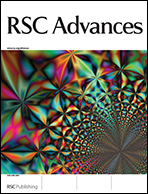Independent of the specific electrode chemistry, the state-of-the-art lithium ion battery electrolytes based on LiPF6 in organic solvents have a low thermal abuse tolerance and poor cycle life at elevated temperatures. We present here a detailed investigation of the initial stages of the thermal decomposition of LiPF6 in EC/DMC stored at 85 °C using Raman and NMR spectroscopy. During storage (up to 160 h), significant amounts of CO2 are evolved, as detected in the Raman spectra. Time-resolved 1H, 31P, and 19F NMR spectra show the evolution of POF3, POF(OH)2, POF2(OCH2CH2)nF, and POF2OMe as reactive decomposition products. Our unique 19F NMR approach, measuring while heating with both high energy and time resolution, allows for a first quantitative analysis of the evolved species and reveals several decomposition reactions during the first 30 min up to 72 h, where the rates of HF and POF2OMe formation are surprisingly linear. EC is found to be much less reactive compared to DMC. All information is used in the formulation of an updated decomposition pathway chart for LiPF6 based electrolytes.

You have access to this article
 Please wait while we load your content...
Something went wrong. Try again?
Please wait while we load your content...
Something went wrong. Try again?


 Please wait while we load your content...
Please wait while we load your content...